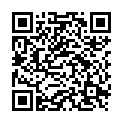|
|
|
| Module code: E928 |
|
3V+1U+1PA (5 hours per week) |
|
5 |
| Semester: 9 |
| Mandatory course: no |
Language of instruction:
German |
Assessment:
Independent project work
[updated 13.03.2010]
|
E928 Electrical Engineering, Master, ASPO 01.10.2005
, semester 9, optional course
|
75 class hours (= 56.25 clock hours) over a 15-week period.
The total student study time is 150 hours (equivalent to 5 ECTS credits).
There are therefore 93.75 hours available for class preparation and follow-up work and exam preparation.
|
Recommended prerequisites (modules):
E804 Electrical Engineering Theory II
[updated 13.03.2010]
|
Recommended as prerequisite for:
|
Module coordinator:
Prof. Dr.-Ing. Vlado Ostovic |
Lecturer:
Prof. Dr.-Ing. Vlado Ostovic
[updated 13.03.2010]
|
Learning outcomes:
After successfully completing this course, students will be able to analyse non-standard electrical machines and to calculate their stationary operating characteristics. Students will learn to adapt, develop and apply the conventional methods of machine analysis to studying special machines.
[updated 13.03.2010]
|
Module content:
1.Conventional and special electrical machines
1.1.Rotating and linear electrical machines
1.2.Heteropolar and homopolar electric machines
1.3.Electric machines with 2- and 3-dimensional flux distributions in the
core-and-coil assembly
2.Superconducting electric machines and transformers
2.1.Fundamental physical principles of superconductivity: Classical and
high-temperature superconductivity
2.2.Superconducting DC machines
2.3.Superconducting alternators
3.PM motors with ummagnetizable magnets
3.1.Conventional PM motors with ferrite, AlNiCo and rare-earth magnets
3.2.Magnetization and demagnetization of permanent magnets
3.3.Brushless unmagnetizable PM motors as car starter-alternators
3.4.Homopolar ummagnetizable PM motors as generators in trucks
4.Homopolar and transverse flux motors
4.1.Magnetic circuits in homopolar and transverse flux motors
4.2.Homopolar DC motors: Structure and applications
4.3.Homopolar synchronous motors: Structure and applications
4.4.From the bicycle dynamo to the transverse flux motor: Advantages and
disadvantages
5.Limit motors and traction generators
5.1.Limit ratings
5.2.Electromagnetic, mechanical and thermal problems with limit motors
5.3.Unbalanced loads in polyphase machines; single-phase and traction
generators
[updated 13.03.2010]
|
Teaching methods/Media:
Lecture notes, overhead transparencies, video projector, PC
[updated 13.03.2010]
|
Recommended or required reading:
OSTOVIC, V.: ‘Sondermaschinen’, (lecture notes)
[updated 13.03.2010]
|


